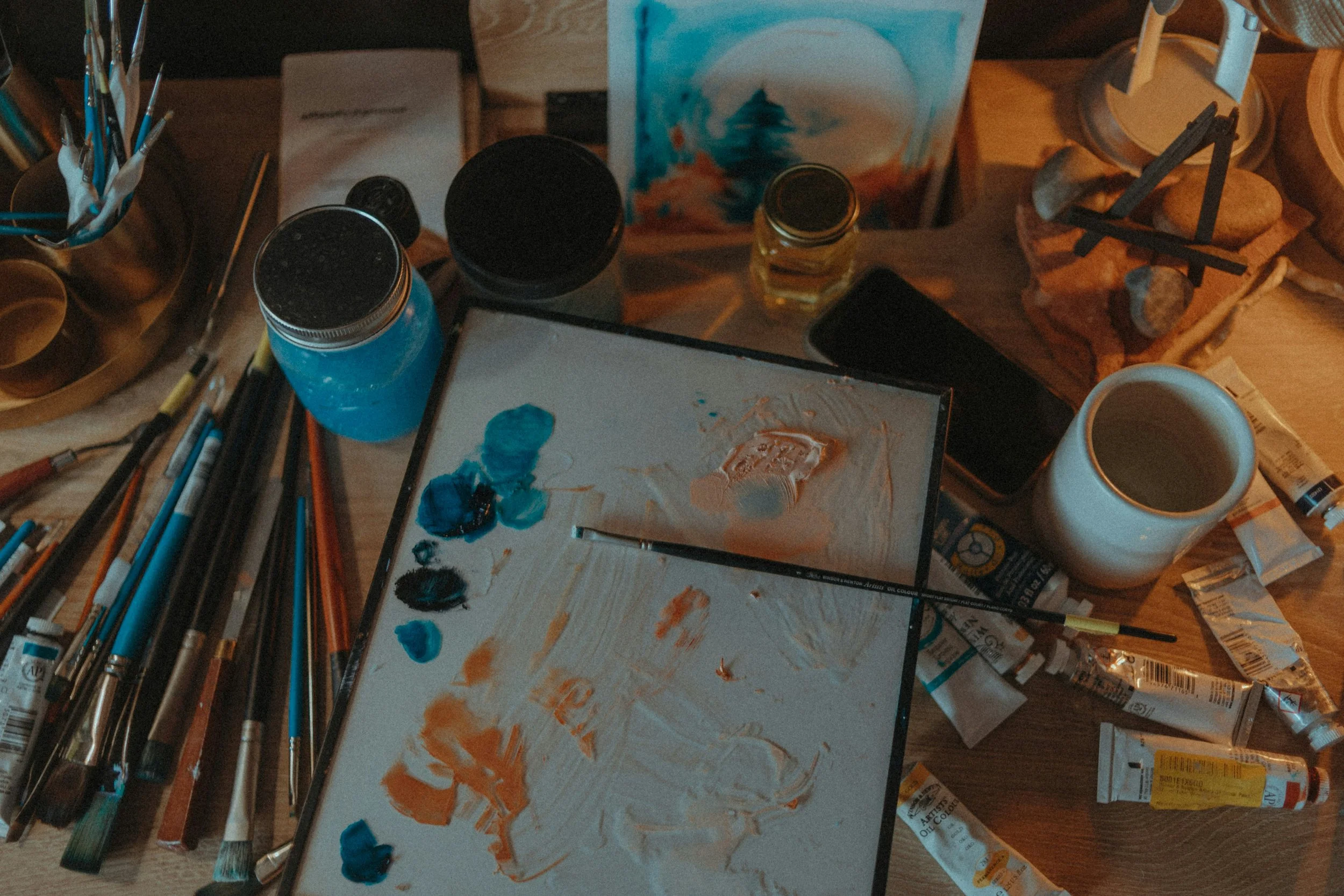Beyond Objectivity: Embracing Subjectivity in Arts-Based Research
Written by Kenneth Haggett
Photo by Brooke Lark on Unsplash
Across most academic disciplines, research methods courses emphasize empirical, positivist approaches to research. As a sociology undergraduate student, I was taught both quantitative and qualitative methods of data collection—including one-on-one interviews, focus groups, surveys, questionnaires, and so forth. Using such methods within the social sciences and humanities, in particular, a researcher collects data from a particular demographic and then analyzes that data to make inferences or share findings about the group in question.
In empirical, positivist approaches to research, questions of subjectivity and personal experience are largely unrecognized. Instead, empirical research is framed as a process of producing objective knowledge (i.e., “truth”) about the surrounding world. Often, this requires the researcher to remain neutral, passive, and dislocated from the participants in order to collect “accurate” data, with results untainted by the researcher’s bias. With the predominance of empirical research throughout history, subjectivity and personal experience have often been pushed aside and rendered invalid in academic inquiry in the pursuit of “objective truth.”
Now, as a Women & Gender Studies grad student, I’ve come to see that research need not always follow these “traditional” standards. While empirical methods are useful and productive research methods, they are not the only pathways to knowledge. Researchers across the social sciences and humanities increasingly take more artistic approaches to knowledge-creation through arts-based research (ABR), which permits innovation in the focus and form of research.
What is Arts-Based Research?
In ABR, researchers can draw on a variety of artistic methods such as dance and performance, song, drawing, painting, photography, poetry, journaling, and craft-making, amongst numerous others for data collection (or even serve as the research itself). Common methodological approaches in ABR include auto-ethnography, auto-theory, phenomenology, and community-based research, which guide the project’s artistic processes and outputs. Such approaches also value subjective knowledge from both participants and the researcher themselves.
In contrast to empirical research methods, ABR opens space for subjectivity within research. Rather than acting as neutral observers of human phenomena, researchers may become deeply involved as participants. For instance, in (auto)ethnographic research, researchers reflect on their own behaviour, thoughts, affect, and embodied experiences within a particular cultural context. What’s more, research can take the form of art itself, where artistic practice and academic inquiry blend together. In this form, ABR challenges and resists ‘traditional’ academic expectations, blurring the supposed dichotomy of art and research.
To get a better sense of ABR in practice, consider the following examples: an Indigenous researcher might craft beadwork as a form of academic exploration to tell a story about their Indigenous heritage and culture—which can reflect both their personal Indigeneity as well as their cultural heritage (see Tiffany Dionne Prete’s or Carla DeMarco’s research). Similarly, an anthropology student might do community-based research in their hometown, drawing from the community’s archive of photographs to collaboratively recount a visual history of place and space.
Making Meaning through Process
Notably, ABR is not simply about the outcome of the research (i.e. the results), but also about the process of research. Valuable insights about personal experience such as identity, embodiment, and memory can emerge through the research process, which are largely absent from “traditional” empirical research.
My research as a graduate student highlights these processes, where I use dance, videos, and journaling as methods of storytelling regarding my experience with discourses of gender. Using phenomenology as a method and a theory, I give descriptive, subjective accounts of personal experience. Drawing on my personal collection of dance videos, I analyze how my gender embodiment has evolved across a two year period from consistent training in feminine dance styles (e.g., heels), while also calling attention to my emotional and embodied reactions while re-watching my personal archive of dance videos. Moreover, using journal entries written after dance classes, I provide rich discussions of my embodiment in the particular moment of dancing. These creative, arts-based methods not only allow me to pursue arts and performance as research, but also allow me to discuss my personal reflections on identity and embodiment through the research process itself.
Critiques of Arts-Based Research
Despite its growing relevance, ABR is not always viewed with praise. Because ABR often draws on subjective, personal experience or collective cultural traditions and/or histories, ABR has been scrutinized by empiricists as lacking generalizability and validity—which is heavily emphasized in empirical research. However, generalizability and replicability are rarely relevant in this type of research. Rather, the creative research process and its artistic outcomes serve as vessels for storytelling specific to the represented individual or group. To generalize using subjective experience would be an unjust misrepresentation of a group of people, while removing the research from its context in the individual’s or group’s lifeworld.
Indeed, ABR is also employed as a means to resist dominant research practices that overgeneralize, obfuscate, and marginalize the experience of particular demographics. Many scholars working from feminist, queer, decolonial, and critical race perspectives employ qualitative, arts-based, and collaborative research methods to honour subjectivity, lived experience, and cultural knowledge that is obscured within empirical research, giving voice to those who have been silenced throughout the history of academia.
A Different Path to Knowledge
Overall, arts-based research is extremely valued across disciplines in the arts, humanities, and social sciences. It challenges dominant assumptions about what counts as knowledge, while using creative projects to open horizons to share personal, cultural, embodied, and affective knowledge. Though empirical research remains important, ABR broadens the scope of academic inquiry—allowing us to ask different questions, tell different stories, and reach different audiences.



